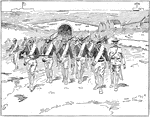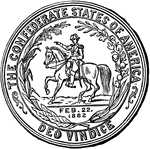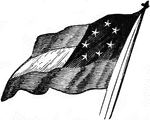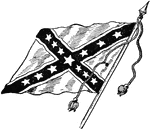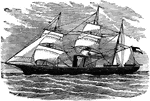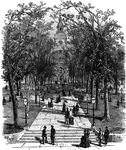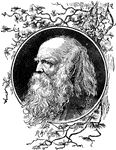
William C. Bryant
William Cullen Bryant (November 3, 1794 - June 12, 1878) was an American romantic poet, journalist,…

Henry W. Longfellow
Henry Wadsworth Longfellow (February 27, 1807 – March 24, 1882) was an American educator and poet…

Hidalgo Castello
Hidalgo Castello was a Mexican Roman Catholic priest and revolutionary rebel leader. He is regarded…

Lewis Cass
Lewis Cass (October 9, 1782 – June 17, 1866) was an American military officer and politician. During…

View at Cedar Creek Battle-ground
The Battle of Cedar Creek, or The Battle of Belle Grove, October 19, 1864, was one of the final, and…
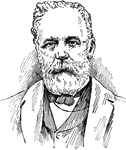
Admiral Pascual Cervera y Topete
Pascual Cervera y Topete (February 18, 1839 – April 3, 1909) served as Almirante (or Admiral)…
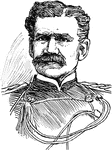
Adna Romanza Chaffee
Adna Romanza Chaffee was a General in the United States Army. Chaffee took part in the American Civil…

Fort Chambly
Fort Chambly at the foot of the Chambly rapids on the Richelieu River in Quebec, Canada, was built by…
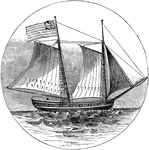
The Royal Savage
Royal Savage, a two-masted schooner, was damaged and sunk by American forces under Richard Montgomery…

Ruins of Chancellorsville
The Battle of Chancellorsville was a major battle of the American Civil War, fought near the village…
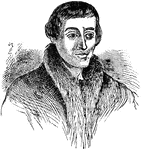
Nicolaus Copernicus
Nicolaus Copernicus (February 19, 1473 - May 24, 1543) was the first astronomer to formulate a scientifically…
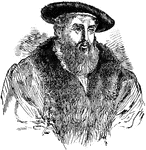
Johannes Kepler
Johannes Kepler (December 27, 1571 - November 15, 1630) was a German mathematician, astronomer and astrologer,…
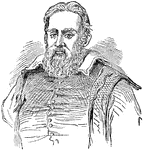
Galileo Galilei
Galileo Galilei (15 February 1564 - 8 January 1642) was a Tuscan (Italian) physicist, mathematician,…
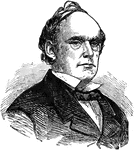
Salmon Portland Chase
Salmon Portland Chase was an American politician and jurist in the Civil War era who served as U.S.…

Medal Given to Black Partridge
Black Partridge or Black Pheasant was a 19th century Peoria Lake Pottawatomie chieftain. He was later…

The Last Vestige of Fort Dearborn
Fort Dearborn, named in honor of Henry Dearborn, was a United States fort built on the Chicago River…

Battle of Chickamauga
The Battle of Chickamauga, fought September 18-20, 1863, marked the end of a Union offensive in south-central…
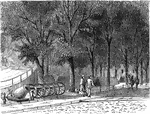
Brooklyn Shipyard
Brooklyn Navy Yard is an American shipyard, located 1.7 miles (2.7 km) northeast of the Battery on the…
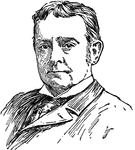
Joseph Hodges Choate
Joseph Hodges Choate (January 24, 1832 - 1917), was an American lawyer and diplomat to the United Kingdom.

Fort Lafayette
Fort Lafayette was an island coastal fortification in New York Harbor, built next to Fort Hamilton.…
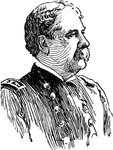
Charles Edgar Clark
Rear Admiral Charles Edgar Clark (10 August 1843 - 1 October 1922) was an officer in the United States…
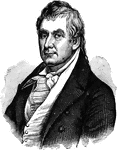
Green Clay
Green Clay was an American surveyor, representative to the Virginia legislature, general of the Kentucky…
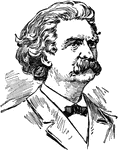
Samuel Langhorne Clemens
American writer who wrote classics such as The Adventures of Huckleberry Finn, The Adventures of Tom…
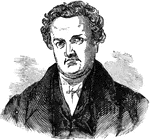
DeWitt Clinton
DeWitt Clinton (March 2, 1769 - February 11, 1828) was an early American politician who served as United…

Clinton's Monument
DeWitt Clinton was an early American politician who served as United States Senator and Governor of…

Clinton's Dispatch and Bullet
Henry Clinton wrote a dispatch to Burgoyne and enclosed it in an elliptical silver bullet, small enough…

Howell Cobb
He was an American political figure. A Southern Democrat, Cobb was a five-term member of the United…

Liberty-cap Cent
The Liberty Cap large cents of 1793-1796 are the classics of early American copper coinage.

Battle of Cold Harbor
The Battle of Cold Harbor, the final battle of Union Lt. Gen. Ulysses S. Grant's 1864 Overland Campaign…
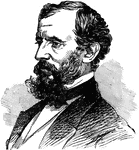
Vincent Colyer
Vincent Colyer (1825 - July 12, 1888) was a successful American artist noted for the images he created…

Confederate Rosette and Badge
The Confederate rosette and badge was worn by supporters of the Southern Confederation.

Confederate National Flag - No. 2
The second Confederate Flag adopted May 1, 1863, called the Confederate National Flag.
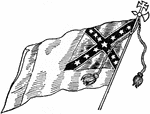
Confederate National Flag - No. 3
The third Confederate Flag adopted March 4, 1865, called the Confederate National Flag.
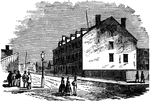
Castle Thunder
Castle Thunder, located in Richmond, Virginia, was a former tobacco warehouse located on Tobacco Row,…
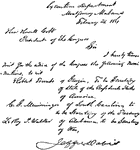
Jefferson Davis's First Message
Jefferson Davis', the President of the Confederate States of America, first message.
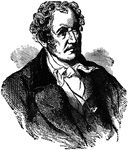
James Fenimore Cooper
James Fenimore Cooper (September 15, 1789 - September 14, 1851) was a prolific and popular American…
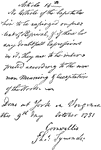
One of the Articles of Capitulation with Cornwallis's Signature
Lord Cornwallis Surrendered Yorktown to George Washington on October 19, 1781. The terms of surrender…
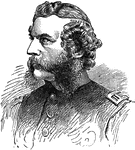
Samuel Wylie Crawford
Samuel Wylie Crawford (November 8, 1829 - November 3, 1892) was a United States Army surgeon and a Union…
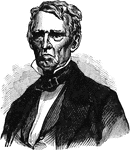
John Jordan Crittenden
John Jordan Crittenden (September 10, 1786 - July 26, 1863) was an American statesman from Kentucky.…

United States Battleship Maine
USS Maine (ACR-1), the first ship of the United States Navy to be named for the state of Maine, was…

Wreck of the Maine in Havana Harbor
USS Maine (ACR-1), the first ship of the United States Navy to be named for the state of Maine, was…

Projection Showing Position of Bow and Keel of the Maine
USS Maine (ACR-1), the first ship of the United States Navy to be named for the state of Maine, was…
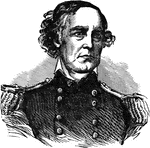
Samuel Ryan Curtis
Samuel Ryan Curtis (February 3, 1805 - December 26, 1866) was an American military officer, most famous…
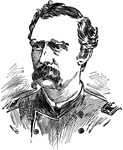
George Armstrong Custer
George Armstrong Custer (December 5, 1839 - June 25, 1876) was a United States Army officer and cavalry…
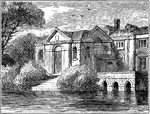
Gunpowder Conspirators' House, Lambeth
The Gunpowder Plot of 1605, or the Powder Treason, as it was known at the time, was a failed assassination…
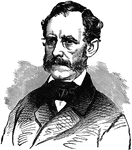
John Adolph Dahlgren
Rear Admiral John Adolphus Bernard Dahlgren, USN, (November 13, 1809 – July 12, 1870) merchant…

Charles Anderson Dana
Charles Anderson Dana (August 8, 1819 – October 17, 1897) was an American journalist, author,…
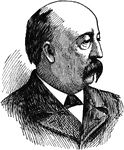
Cushman Kellogg Davis
Cushman Kellogg Davis (June 16, 1838 – November 27, 1900) was an American politician who served as…

Jefferson C. Davis
Jefferson Columbus Davis (March 2, 1828 – November 30, 1879) was an officer in the United States…

Stephen Decatur
Commodore Stephen Decatur, Jr (5 January 1779 – 22 March 1820) was an American naval officer notable…

Kalorama
The residence was rechristened "Kalorama", Greek for "beautiful view", by its new owner, American author…
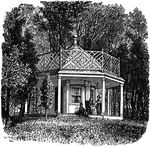
Garden House in Which Jefferson Celebrated the Passage of the Declaration
The garden house in which Jefferson and others celebrated the passage of the Declaration of Independence.

